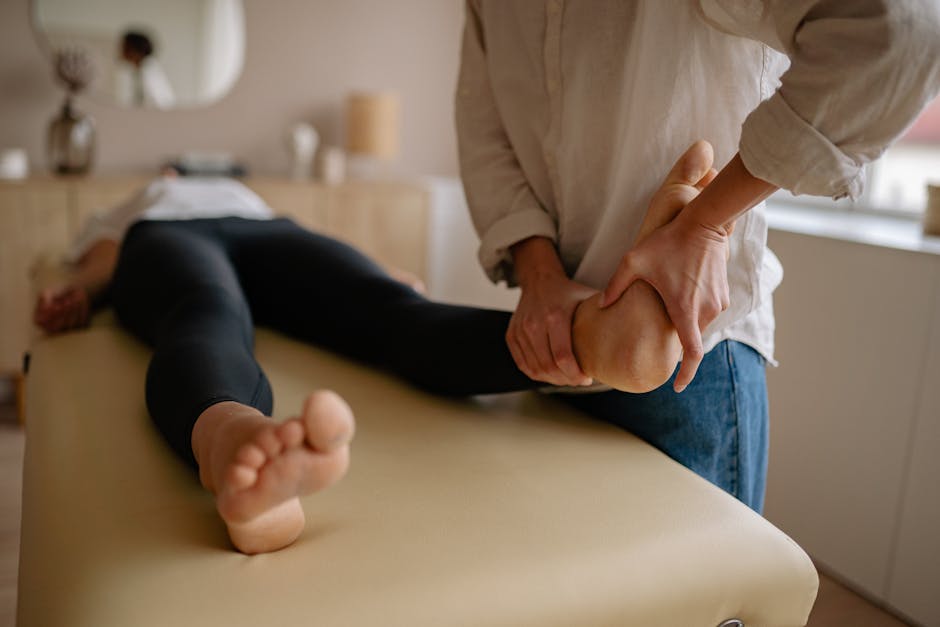Holistic Approaches to Joint Pain: A Comprehensive Guide
Joint pain is a common ailment that affects millions of people worldwide. Whether it’s due to arthritis, injury, or other underlying conditions, dealing with joint pain can be debilitating and impact one’s quality of life. While conventional treatments like medication and surgery are often recommended, many individuals are turning to holistic approaches to manage and alleviate joint pain. In this article, we will explore the various holistic methods, techniques, and practices that can help individuals find relief from joint pain while improving their overall well-being.
The Mind-Body Connection

One of the fundamental principles of holistic approaches to joint pain is the recognition of the mind-body connection. Research has shown that our mental and emotional states can have a significant impact on our physical health, including joint pain. Practices like meditation, yoga, and mindfulness can help individuals manage stress, reduce inflammation, and improve their overall sense of well-being, which can positively influence joint pain.
Nutrition and Diet

Another crucial aspect of holistic approaches to joint pain is nutrition and diet. Certain foods and nutrients can either exacerbate or alleviate joint pain. For example, anti-inflammatory foods like fatty fish, leafy greens, and berries can help reduce inflammation in the body, which is often a key factor in joint pain. On the other hand, processed foods, sugary drinks, and trans fats can worsen inflammation and contribute to joint pain. By adopting a balanced and nutritious diet, individuals can support their joint health and reduce pain naturally.
Physical Activity and Exercise

Physical activity and exercise play a vital role in managing joint pain holistically. While it may seem counterintuitive to move when experiencing joint pain, regular exercise can actually help strengthen the muscles around the joints, improve flexibility, and reduce stiffness. Low-impact exercises like swimming, cycling, and yoga are particularly beneficial for individuals with joint pain, as they provide a gentle yet effective way to stay active without causing further discomfort.
Alternative Therapies

There are a variety of alternative therapies that can complement traditional treatments for joint pain. Acupuncture, for example, is a practice rooted in traditional Chinese medicine that involves the insertion of thin needles into specific points on the body to alleviate pain and promote healing. Chiropractic care, massage therapy, and herbal remedies are also commonly used to address joint pain holistically. These therapies focus on restoring balance and harmony to the body, which can help reduce pain and improve overall function.
Supplements and Natural Remedies
Many individuals turn to supplements and natural remedies to manage joint pain without relying on prescription medications. Glucosamine and chondroitin are popular supplements that are believed to support joint health and reduce pain and inflammation. Turmeric, omega-3 fatty acids, and ginger are also natural remedies that have anti-inflammatory properties and can help alleviate joint pain. It’s essential to consult with a healthcare provider before starting any new supplement regimen to ensure safety and efficacy.
Emotional Well-being and Support
Dealing with chronic joint pain can take a toll on one’s emotional well-being. It’s essential for individuals to seek emotional support and care as part of their holistic approach to managing joint pain. Support groups, therapy, and counseling can provide individuals with the tools and resources they need to cope with the challenges of living with chronic pain. By addressing the emotional aspects of pain, individuals can better manage their symptoms and improve their overall quality of life.
Integrative Medicine and Collaborative Care
Integrative medicine emphasizes the importance of combining conventional treatments with holistic approaches to address the root causes of joint pain comprehensively. By working with a team of healthcare providers, including physicians, physical therapists, nutritionists, and holistic practitioners, individuals can receive personalized care that considers their unique needs and preferences. Collaborative care ensures that all aspects of an individual’s health are taken into account, leading to more effective and sustainable outcomes in managing joint pain.
Common Misconceptions About Holistic Approaches to Joint Pain
There are several misconceptions surrounding holistic approaches to joint pain that may deter individuals from exploring these alternative options. One common misconception is that holistic methods are not backed by scientific evidence. In reality, many holistic practices have been studied and shown to be effective in managing joint pain. Another misconception is that holistic approaches are time-consuming and require significant lifestyle changes. While some practices may require adjustments, incorporating holistic methods into one’s routine can be simple and rewarding.
FAQs About Holistic Approaches to Joint Pain
1. Can holistic approaches cure joint pain?
While holistic approaches may not cure joint pain entirely, they can help manage symptoms and improve overall quality of life.
2. Are holistic approaches safe?
Most holistic approaches are safe when practiced under the guidance of a qualified healthcare provider. It’s essential to consult with a professional before starting any new treatment.
3. How long does it take to see results from holistic approaches?
The timeline for seeing results from holistic approaches varies from person to person. Some individuals may experience relief quickly, while others may require more time and consistency in their practices.
Conclusion
In conclusion, holistic approaches to joint pain offer a comprehensive and integrative way to manage symptoms, improve quality of life, and promote overall well-being. By addressing the mind-body connection, adopting healthy lifestyle habits, exploring alternative therapies, and seeking emotional support, individuals can find relief from joint pain while taking a proactive approach to their health. It’s essential to work with a team of healthcare providers and explore various holistic methods to find the right combination that works best for each individual. Ultimately, the holistic approach to joint pain emphasizes the importance of treating the whole person, not just the symptoms, to achieve long-lasting and sustainable results.
To wrap things up, holistic approaches to joint pain empower individuals to take control of their health and well-being, offering a personalized and holistic way to manage pain and improve overall quality of life. By integrating various practices and therapies that address the root causes of joint pain, individuals can experience relief, healing, and a renewed sense of vitality.




